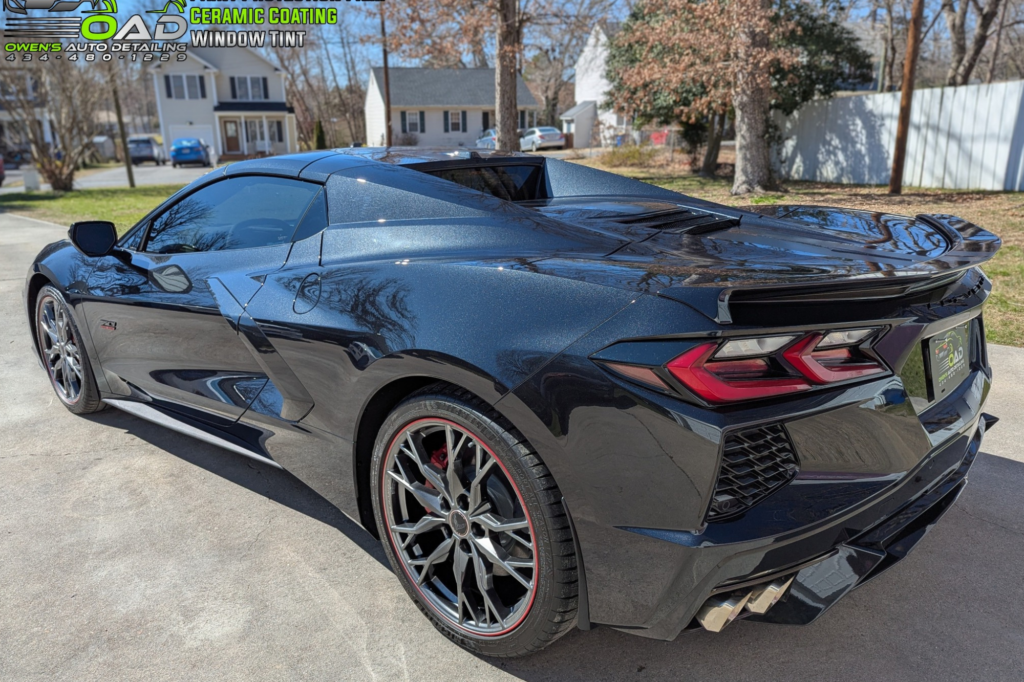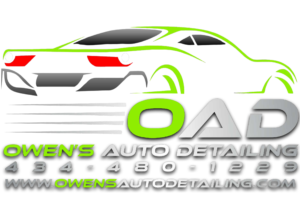Your ceramic coating is fading too soon, likely because of a few critical factors. First, improper surface preparation jeopardizes bonding; this includes thorough decontamination and paint correction. Next, subpar application techniques can compromise durability; proper environmental control and curing time are key. Environmental stressors such as UV radiation and acid rain deteriorate the coating. Verify the product’s SiO₂ content is high-grade and from reliable manufacturers. Finally, routine maintenance mistakes, like using abrasive tools and skipping decontamination, degrade the coating. By addressing these areas, you can greatly extend your ceramic coating’s life expectancy and performance.
Key Takeaways
- Inadequate surface preparation can lead to poor coating adhesion and premature fading.
- Subpar application techniques, such as uneven distribution, compromise coating durability.
- Environmental factors like UV radiation and pollutants accelerate coating degradation.
- Low-quality coating products with insufficient SiO₂ content lack durability and effectiveness.
- Poor maintenance, such as skipping washes and using harsh cleaners, degrades coating properties.
Improper Surface Preparation
Before applying a ceramic coating, guaranteeing proper surface preparation is vital to achieving a durable and long-lasting finish. You can’t overlook this significant step if you want to avoid ceramic coating fading.
First, thoroughly wash and decontaminate the vehicle’s surface to remove any dirt, grease, or previous wax layers. Utilize a clay bar to extract embedded contaminants, guaranteeing a pristine surface for optimal bonding. This meticulous cleaning process reduces the risk of improper application that leads to premature fading.
Next, a paint correction should be conducted if necessary. Any existing scratches or swirl marks should be rectified using a dual-action polisher and appropriate compound. This step guarantees the paint surface is smooth and defect-free, providing a perfect foundation for the coating.
Remember, a rough surface can impede the coating’s adhesion, resulting in early degradation.
Finish with an isopropyl alcohol wipe-down to remove any polishing oils or residues. This step assures that the surface is completely clean, offering an ideal substrate for coating application.
Neglecting this vital preparation phase can compromise the coating’s longevity, causing it to fade prematurely and diminish the protective benefits you seek.
Subpar Application Techniques
Achieving a flawless ceramic coating doesn’t stop at thorough surface preparation; the application process itself plays a pivotal role in the coating’s longevity. Incorrect application techniques can lead to ceramic coating durability issues, causing many to wonder, “Why is my ceramic coating fading?”
Subpar techniques often result in inadequate bonding between the coating and the vehicle’s surface. This weak adhesion can cause the protective layer to degrade prematurely, diminishing its effectiveness against environmental hazards.
To prevent these issues, verify that the application process follows industry best practices. First, the environment must be controlled—temperature and humidity can greatly affect how the coating cures. Applying the coating in a dust-free, controlled setting minimizes contamination risks.
Next, use the correct amount of product. Over-application can lead to streaks, while under-application may leave portions of the surface unprotected. Utilize a crosshatch pattern for even distribution, verifying complete coverage and uniform thickness.
Finally, allow sufficient curing time. Rushing this step can compromise the coating’s integrity, leading to premature fading. By adhering to these techniques, you maximize the coating’s durability and preserve the vehicle’s aesthetic appeal for years to come.
Environmental Factors
When considering environmental factors, it’s crucial to recognize how they can accelerate ceramic coating degradation. In areas like Richmond, where climate conditions vary, your vehicle’s ceramic coating is constantly exposed to UV radiation, acid rain, and pollutants.
UV radiation, in particular, breaks down the molecular structure of the coating, leading to fading and loss of gloss. This is especially prevalent in regions with high sun exposure, which Richmond experiences. Acid rain, a byproduct of industrial emissions, can also etch into the coating, compromising its protective barrier.
Pollutants and road salts further exacerbate this process. They adhere to the ceramic surface, increasing abrasive wear and chemical interactions that weaken the coating over time. In coastal areas near Richmond, salty air can accelerate oxidation, causing the coating to degrade faster than anticipated.
You must implement protective measures like using car covers or parking in shaded areas to mitigate these effects.
Regular maintenance washes using pH-neutral products will help remove contaminants that could compromise the ceramic layer. In Richmond, factors like fluctuating weather, road debris, and pollution can affect your vehicle’s finish. By taking proactive steps, such as routine cleaning and protective measures, you can ensure your ceramic coating Richmond area maintains its durability and shine for longer.

Quality of Coating Product
Though ceramic coatings offer remarkable protection, the quality of the coating product plays a pivotal role in its performance and longevity. Not all ceramic coatings are created equal. It’s essential to choose a high-quality formulation that provides strong durability and resistance to environmental contaminants.
A reputable manufacturer will offer transparency about the coating’s composition, ensuring you get a product that effectively protects against UV damage, dirt, and other harmful elements. For optimal results, consider the best Ceramic Coating Service, which provides professional-grade protection and long-lasting durability for your vehicle.
When selecting a ceramic coating, scrutinize the product’s chemical composition. Choose coatings with high-quality ingredients that enhance durability and protection. This ensures the coating remains effective over time, providing long-lasting defense against environmental elements.
Additionally, verify the product has a proven track record backed by data and real-world testing. High-quality coatings often undergo rigorous testing for abrasion resistance, chemical resilience, and hydrophobic properties.
Opt for coatings with certifications from recognized industry standards, as they indicate the product’s reliability and performance benchmarks.
Maintenance Routine Mistakes
A high-grade ceramic coating forms a robust shield over your vehicle, but without a disciplined maintenance routine, even the best products falter. Skipping routine washes invites contaminants to cling to the surface, degrading the coating’s protective properties.
Your maintenance wash should be systematic, involving pH-neutral, ceramic-safe shampoos to avoid stripping the coating. Using abrasive cleaning tools will mar the surface, leading to premature wear. Instead, employ microfiber mitts for a gentle touch that preserves the coating’s integrity.
Neglecting decontamination processes is another common pitfall. Over time, iron particles and road grime embed themselves into your vehicle’s surface. Regular use of an iron fallout remover and clay bar treatment guarantees these contaminants don’t compromise your coating’s integrity.
Additionally, failing to apply a top-up coat can diminish the hydrophobic properties, leaving the surface vulnerable. A top-up coat reinforces the ceramic layer, restoring its water-repellent capabilities.
Avoid drying your vehicle under direct sunlight as this can cause water spots, which etch into the coating. Opt for a shaded area and use a plush drying towel for a superior finish.
Implementing these meticulous steps guarantees your ceramic coating remains effective and visually stunning.
Exposure to Harsh Chemicals
Exposing your vehicle’s ceramic coating to harsh chemicals can severely compromise its protective qualities. When you use products with aggressive solvents and high alkaline or acidic content, they can strip away the coating’s molecular bonds, reducing its effectiveness.
This erosion doesn’t just dull the glossy finish; it also exposes the paintwork to contaminants and UV damage. To maintain the integrity of your coating, you’ll want to avoid cleaners labeled as “heavy-duty” or “industrial strength,” which often contain these harmful agents.
It’s essential to adopt a process-oriented approach to washing that emphasizes safe, pH-neutral products. Opt for car shampoos specifically designed for ceramic coatings; these formulations are gentle yet effective at removing dirt without degrading the coating.
Additionally, avoid using household cleaners or degreasers, as these aren’t formulated for automotive surfaces and can cause considerable harm.
When detailing your vehicle, using suitable microfiber towels is just as important. Abrasive materials and scrubbers can scratch the surface, accelerating fading.
In Summary
To guarantee your ceramic coating stays pristine, prioritize meticulous surface preparation and use superior application techniques. Choose high-quality coating products and stick to a consistent maintenance routine, avoiding harsh chemicals that can degrade the finish. Be mindful of environmental factors like UV exposure and contaminants, as these can accelerate fading.
By addressing these critical areas, you’ll maximize the longevity and effectiveness of your ceramic coating, keeping your vehicle looking sharp and protected for longer. For expert service, trust Owen’s Auto Detailing, where professional-grade coatings and precision application ensure the best protection for your vehicle.
